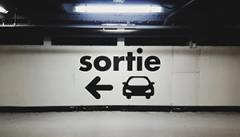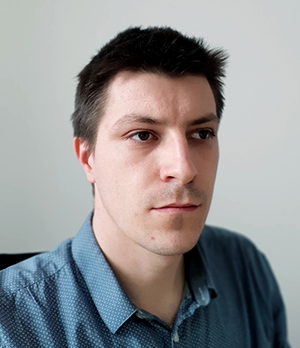
Education
Auto’mobilités campus to respond to post-lockdown challenges
In a locked-down France, mobility has been put on hold: quiet motorways, few private vehicles in the city centre, blue skies devoid of planes... for now. With the end of lockdown on the horizon, the memory of the buzz of cities and their cars is gradually coming back to us. How should we imagine post-lockdown mobility? Sébastien Morterolle, associate professor in the mechanical engineering department and researcher at LaMCos1, focuses on the electrification of vehicles. He is also a member of the Auto’Mobilités campus steering committee. Explanations.

The nomad in search of ‘zero emissions’.
Mobility has already been frozen for 52 days. For the country’s major cities, the debate dates back several years: considering new mobility plans for their centres, between environmental imperatives and European greenhouse gas emission standards. ‘For months now, cities have been accelerating the movement towards ’zero emissions’ by considering priority areas, particularly in light of European Court of Justice sanctions on NO2emissions . Automobile equipment manufacturers also had to change their approach because in 2014, European leaders approved the ’Corporate Average Fuel Economy’ (CAFE) regulation capping the CO2 emissions of vehicles at 95g/km, encouraging the development of electric vehicles in fleets. In fact, we are seeing more and more electric cars in big cities and, little by little, heavy goods lorries making deliveries and collecting household waste. The challenges of mobility are more topical than ever’, says Sébastien Morterolle.
If alternative solutions to the ageing model of ‘each to his own diesel or petrol car’ had not persuaded the most reluctant customers, might the health crisis have accelerated an awareness of the hyper-mobility to which they were accustomed? ‘It may be too early to announce a turning point at the moment, but with lockdown having brought us to a standstill, I believe that awareness on the part of customers has happened more quickly than expected. Moreover, 2020 is a pivotal year for the electric vehicle, thanks to the European bonus scheme’, continues Sébastien.
Rethinking uses and materials
On 12 March, 2020, the President of the Republic announced that he wanted ‘to learn lessons from the current situation, to question the development model to which our world has been committed for decades’. The mobility sector did not wait for this instruction to question its model, seeing the environmental issue hovering over its head, incompatible with the billions of combustion engines still sleeping in the garages of locked-down drivers. Among various emerging technologies, Sébastien is working on the hybridisation of engines. ‘Research at INSA laboratories focuses on the electrification of vehicles and optimal energy management, as well as the development of batteries, the hydrogen fuel cell and the connected vehicle. These are emerging technologies whose model needs to be perfected. Among the challenges of the electric car, the recycling of batteries and the source of electricity production are two key aspects that need to be addressed to really reduce the environmental cost of these vehicles. Otherwise, the problem would simply be shifted’.
According to Sébastien, rethinking the vehicle and its technical aspects is only the tip of the iceberg. ‘Once the vehicle itself has been redesigned to be ’cleaner’, the next step is to work on the service package that goes with it. When developing electric vehicles, we need to think about a new environment that will allow access to charging stations. Another parameter to be considered is that of changes in transport use: for example, ’free-floating’, a model of self-service car-sharing without terminals that would make it possible to drastically reduce the use of private cars in the city, is developing at high speed’, continues Sébastien.
Educating younger generations in future mobility challenges
A new era for mobility means new skills to be developed for the next generations of transport professionals. As we are already seeing the need for electrical maintenance on vehicles and charging stations, students need to switch to these new technologies to enter the world of work. In order to advance education in these new mobility professions, educational institutions, laboratories, teachers and automotive professionals have come together around a major project: the Auto’Mobilités campus. ‘Our objective is twofold: to link the academic world with industry while responding to the challenges of technological and sociological changes in mobility. The steering committee, which has been active for three years, is working to identify the major needs of the future of mobility, particularly electric mobility. The purpose of the campus is to reflect on the new skills to be developed for future experts and to set up activities to guide young people towards these future professions’, continues the associate professor.
INSA Lyon: the totem pole of the campus
The Auto’Mobilités campus project has already benefited from a national grant as an Investment for the Future (PIA) project to finance a roller test bench that students have already used to test vehicles. ‘The idea behind the campus is to create a showcase for ’automobility’ to attract future students and, above all, to create a dedicated space that would strengthen the feeling of belonging to the sector, which has not attracted many people in recent years. In order to bring the project to life, we would like INSA Lyon to become the totem for this theme, as many of our stakeholders are working on mobility and several of our courses focus on vehicles, such as mechatronics. We have high hopes for this initiative, particularly with the creation of a specialist Master’s degree in electric vehicle design, classes for which would take place here at INSA Lyon. While waiting for the project’s certification, which is on hold due to the health crisis, and while waiting for the mobility of the future, let’s stay home a little longer’, concludes Sébastien Morterolle
1 Contact and Structure Mechanics Laboratory (INSA Lyon/CNRS - National Centre for Scientific Research)

